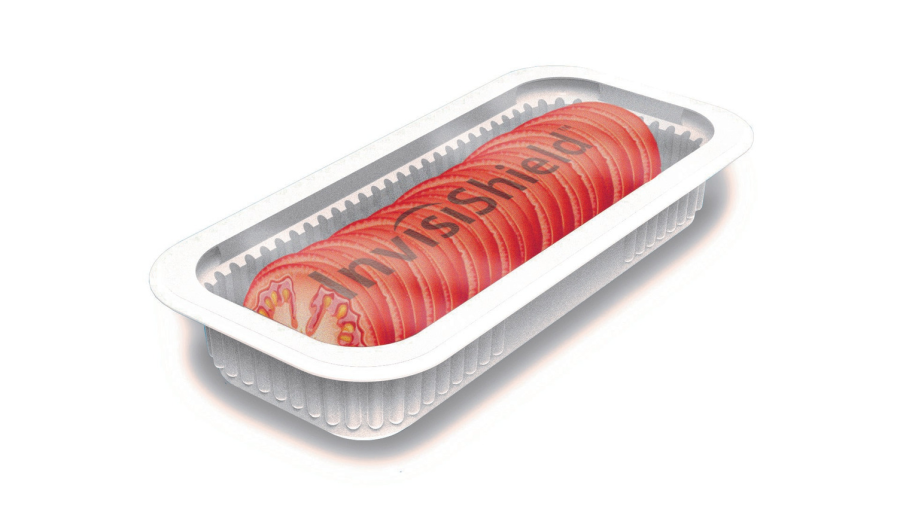Unsustainable practices in packaging have contributed significantly to environmental degradation, leading to pollution, resource depletion, and significant waste generation. It is crucial to adopt solutions that minimize environmental degradation and, as a result, reduce food waste.
The evolution of packaging towards more innovative solutions is an exciting prospect! It's not just about the materials anymore; it's about the intelligence woven into every layer. Imagine packaging that protects the product, communicates its freshness and authenticity, and even offers suggestions for use or recycling.
As we step into this future, we must balance the conventional and the intelligent. While we embrace cutting-edge technologies, we must ensure these solutions are accessible and affordable for businesses of all scales. Imagine packaging that protects its contents and interacts with them and you, the consumer. Welcome to the world of intelligent packaging—where advanced technologies bring added value, enhanced functionality, and rich information right to your fingertips, all while maintaining the familiarity of conventional packaging.
Innovative packaging is a multifaceted solution to sustainability challenges in the packaging industry. According to a research report published by Spherical Insights & Consulting, the global intelligent packaging market was valued at USD 25.7 billion in 2023 and is expected to reach USD 46.9 billion by 2033, with a CAGR of 6.2%.
What is Smart Packaging?
Smart packaging incorporates advanced technologies and features beyond conventional functions like containment and protection. It actively interacts with the product, environment, or consumer to provide additional value, functionality, or information.
Smart packaging offers innovative solutions to address the significant challenges associated with traditional packaging: quality control, transparency, and sustainability. Firstly, smart packaging enables real-time quality control throughout production and distribution by integrating sensors and monitoring systems. This ensures that products meet stringent quality standards, reducing the risk of defects or contamination.
Secondly, smart packaging enhances transparency by providing consumers with comprehensive product information. QR codes, NFC tags, or augmented reality features allow shoppers to learn about the product's origin, ingredients, and environmental impact.
Most importantly, smart packaging revolutionizes sustainability in packaging. Through innovative materials and design, such as biodegradable polymers or reusable containers, smart packaging minimizes environmental impact.
Additionally, technologies like RFID tracking and blockchain enable traceability throughout the supply chain, facilitating the adoption of eco-friendly practices and ensuring ethical sourcing.
By integrating intelligent sensors and active components, smart packaging actively monitors and maintains the freshness and quality of perishable goods throughout their journey from production to consumption. With real-time data on factors like temperature, humidity, and gas levels, smart packaging empowers consumers to make informed decisions, so it’s not just packaging—it’s a more innovative way to connect with what you consume.
Types of smart packaging
Active Packaging to extend the shelf life of food product
Imagine packaging that not only holds your favorite snacks but actively works to extend their shelf life and maintain their quality. This technology integrates antioxidants, antimicrobials, moisture, various gas absorbers, and ultraviolet radiation absorbers into the packaging to actively modify the package’s atmosphere. It aims to preserve freshness by inhibiting microbial growth, controlling moisture, and reducing the oxidation rate.
Manufacturers are getting creative with their materials, opting for starch-based composite films, nanocomposites, copper-infused LDPE films, and biopolymer-based packaging. These materials not only minimize spoilage but also extend the shelf life of products. They’re tapping into resources like carboxymethyl cellulose (CMC), Myrrh gum (MG), titanium dioxide nanoparticles (TiO2 NPs), Dill essential oil (DEO), and copper microparticles to enhance the packaging’s mechanical properties while adding antimicrobial and antioxidant capabilities. Plus, focusing on natural biopolymers, they’re addressing sustainability concerns by offering biodegradability and ensuring non-toxicity.
In Jan 2024, ProAmpac launched Moisture Protect (MP-1000) technology, which eliminates the need for desiccant packets and demonstrates targeted solutions for moisture control, extending shelf life and improving product quality. In Feb 2024, AINIA launched customizable active packaging solutions that highlight the adaptability of these technologies to specific industry needs, emphasizing benefits such as reduced food waste and enhanced food safety. Together, these solutions aren’t just about keeping food fresh; they’re about reducing food waste and improving food safety, hitting all the right notes for consumers and manufacturers alike.
But it’s not just the industry players pushing the envelope. Regulatory authorities like the International Organization for Standardization (ISO) are also stepping in. They’re developing standards like ISO/CD 6608-1, which sets out the general requirements and specifications for active packaging. Still in the works, this standard is poised to ensure quality and safety in this rapidly evolving field. Learn more about ISO regulations related to packaging.
Intelligent packaging to monitor food quality and prevent product waste
Intelligent packaging contains sensors that determine the condition, such as freshness or temperature of the product. Its main goal is to sense and provide information about whether the quality of the product has deteriorated. This type of packaging offers consumers information about product storage, usage, and expiry. It uses sensing, detecting, tracing, recording, and communicating features to extend shelf life, enhance quality and safety, provide information, and warn about potential problems. Intelligent packaging utilizes indicators and microsensors to carry out its functions. Learn more about Intelligent packaging systems for food applications.
Leading technology providers have been developing and launching solutions to tackle problems associated with conventional packaging. Players such as SML, Avery Dennison, 1Less, Tetra Pak, etc, have launched intelligent packaging solutions. SML launched Clarity Food, which offers real-time traceability and precise inventory management, enabling stakeholders to slash food waste by an astounding 48%. 1Less developed a closed-loop reuse system that eliminates the need for single-use plastic containers and cutlery. By eliminating the need for single-use plastic containers and cutlery, they reduce waste and reshape how we think about sustainability. Avery Dennison Smartrac is also making waves with its Pure Line—a lineup of sustainable RFID tags and inlays designed to minimize environmental impact. With products like Pure and Pure 95 leading the charge, they’re proving that eco-consciousness and technological innovation can go hand in hand.
Intelligent packaging doesn’t just keep your snacks fresh – it acts as a superhero in disguise, combating counterfeit products, boosting your smartphone’s IQ, and even saving the day by signaling exactly when your food is about to expire. With sensors, indicators, and radiofrequency identification (RFID) systems leading the charge, this tech has boundless capabilities.
The International Organization for Standardization (ISO) is developing specific standards for active and intelligent packaging, including ISO/AWI 6608-2, which is expected to be released soon.
Connected Packaging enhances brand-to-consumer engagement
Connected packaging refers to the integration of digital technologies with physical packaging to enable interaction with digital devices such as smartphones or tablets. It is revolutionizing how brands engage with consumers and offer an environmentally sustainable way to connect and educate customers.
Connected packaging isn’t just about fancy tech jargon – it’s about bringing products to life in a way never done before. By integrating digital technologies like QR codes, NFC tags, and augmented reality into the packaging, brands are turning ordinary items into interactive experiences. Picture yourself tapping an NFC tag on a box of cookies, and suddenly, you’re playing a game to win prizes or learning about the farmers who grew the ingredients.
In collaboration with Appetite Creative, Tetra Pak has redefined the concept of packaging interaction. Through their partnership, they’ve developed connected packaging that offers consumers a unique web app-based experience by scanning an on-pack QR code. This seamless integration of digital technology into physical packaging opens up a world of possibilities for engaging with products in a whole new way.
Meanwhile, it’s packaging. Adding a scannable code makes it easier for partially sighted individuals to access labeling and allergen information. This thoughtful addition not only enhances accessibility but also demonstrates a commitment to catering to the diverse needs of its consumers.
Market Scenario and Recent Developments
Smart materials are specially designed with properties that can significantly alter external stimuli, such as stress, moisture, and electric or magnetic fields. The food and beverage industry has begun using intelligent materials for packaging to make products more consumer-friendly, interactive, and environmentally friendly.
Active packaging has garnered attention for its remarkable ability to reduce food and water wastage by 1.1 million tons and 314 billion gallons, respectively. At the same time, connected packaging has seen a surge in demand, with its user base increasing from 54% in 2022 to 81% in 2023. Let’s dive into some of the latest developments in the smart packaging scene:
- Imagine stickers on meat products that can tell you exactly how fresh they are by changing color. That’s the brainchild of Auburn University researcher Burak Aksoy, who recently won a patent for his gas-sensing coating. It’s a game-changer for consumers and retailers, ensuring meats stay fresh and safe.
- Roll stock earned a prestigious 2024 WorldStar Packaging Award for its ability to keep lamb cutlets fresh for longer. Developed for JBS Foods Australia, this innovative roll stock uses CRYOVAC material and vacuum skin technology to prevent spoilage and extend shelf life.
- Asahi Beverages Philippines and Appetite Creative are also making waves with their smart packaging campaign for Goodday drinks. By tracking real-time interactions, they’re not just selling drinks; they’re creating personalized experiences and gaining valuable insights into consumer behavior.
- In 2023, Brandmydispo, a cannabis packaging company based in Oklahoma, introduced advanced pouches and custom packaging solutions with smart features like QR codes, real-time freshness indicators, and NFC technology.
- Fromagerie Milleret and Amcor are teaming up to tackle cheese packaging with a breathable, recyclable solution. Their innovative wrap ensures cheese stays fresh while addressing consumer concerns about food waste and recyclability.
These are just a few examples of how smart packaging is reshaping the industry, offering innovative solutions to age-old problems, and creating a more sustainable future for everyone.
Entities working on Smart packaging:

Opportunities and Challenges
Smart packaging isn’t just a buzzword; it’s a gateway to a future where our everyday products are safer, more sustainable, and more engaging than ever. Let’s delve into the exciting opportunities it brings:
- Elevated Product Safety and Quality Assurance: Imagine packaging that actively monitors its contents’ condition, adjusting temperature and humidity to keep products fresher for longer. With sensors and software seamlessly integrated, smart packaging ensures optimal storage conditions, reducing the risk of spoilage and contamination.
- Championing Waste Reduction and Sustainability: Smart packaging isn’t just about protecting products but also the planet. Extending shelf life and guiding consumers on responsible disposal through intuitive recycling instructions paves the way for a more sustainable future, one package at a time.
- Empowering Consumer Engagement and Experience: Picture a world where your cereal box tells the story of its journey from farm to table or offers personalized recipes based on its contents. With interactive features like QR codes and NFC tags, smart packaging transforms mundane transactions into immersive experiences, fostering stronger connections between brands and consumers.
As we embrace the potential of smart packaging, it’s essential to acknowledge and address the following challenges:
- Balancing Innovation with Affordability: While the benefits of smart packaging are undeniable, the upfront costs of integrating sensors and software into packaging materials can be prohibitive. Striking a balance between innovation and affordability is critical to ensuring widespread adoption and accessibility.
- Safeguarding Data Privacy and Security: Smart packaging collects and stores sensitive data about products and consumers, bringing with it data privacy and security concerns. Implementing robust safeguards against unauthorized access and cyber threats is imperative to maintaining consumer trust and regulatory compliance.
- Navigating Regulatory Complexity: Regulatory frameworks in a rapidly evolving landscape can be challenging. Establishing clear industry standards and guidelines, alongside proactive collaboration between stakeholders and regulatory bodies, is essential to foster responsible innovation and adoption while ensuring safety and compliance.
By proactively addressing these threats and challenges, we can unlock the full potential of smart packaging while safeguarding consumer interests, privacy, and the environment. Collaboration, innovation, and responsible practices will pave the way for a brighter, more sustainable future of packaging.
Conclusion
As we look ahead, the future of food packaging is brimming with possibilities. Innovation transforms packaging from mere wrapping to a dynamic, interactive experience, especially with sustainable materials and advanced technologies.
Evalueserve's Innovation and R&D solutions are at the forefront of this transformation, offering cutting-edge technologies and strategies that align with the packaging industry's evolving needs. By leveraging Evalueserve's expertise, businesses can stay ahead of the curve, ensuring their packaging solutions are innovative, sustainable, and consumer-friendly.
Smart packaging, powered by IoT and sensors, now offers real-time tracking, personalized engagement, and enhanced safety. Imagine scanning a package to access its journey from farm to table or receiving alerts if the product is compromised.
Moreover, augmented reality (AR) and near-field communication (NFC) create interactive experiences. Point your smartphone at a cereal box and watch colorful characters explain the ingredients and nutritional benefits. Packaging is becoming a tool for engagement and information.
Sustainability remains a critical focus. Eco-friendly solutions, from biodegradable materials to reusable containers, are gaining traction. Future packaging will be green and adaptable to on-demand production and delivery, reducing waste and optimizing resources.
In essence, modern packaging goes beyond protecting contents—it's about enhancing user experience and fostering a sustainable future.
Talk to One of Our Experts
Contact Evalueserve today to discover how our Innovation and R&D services can help your business stay ahead of the curve.





